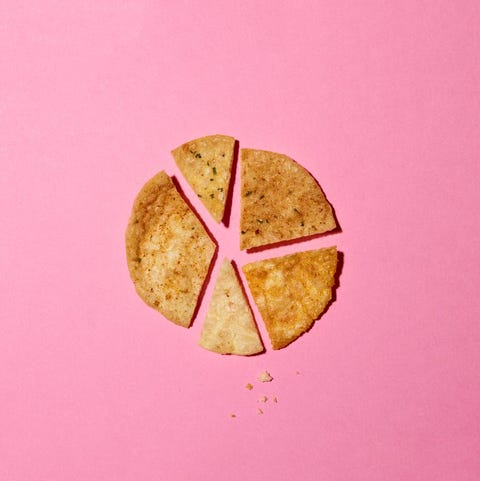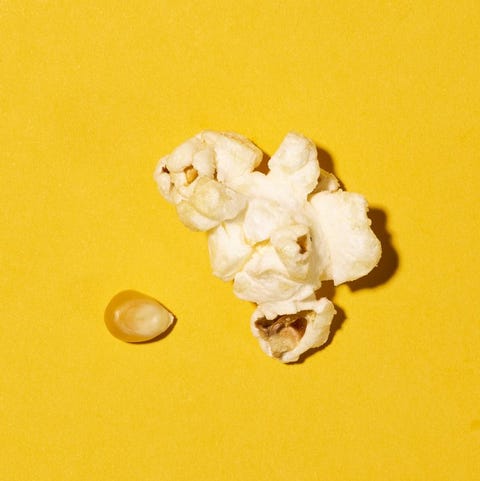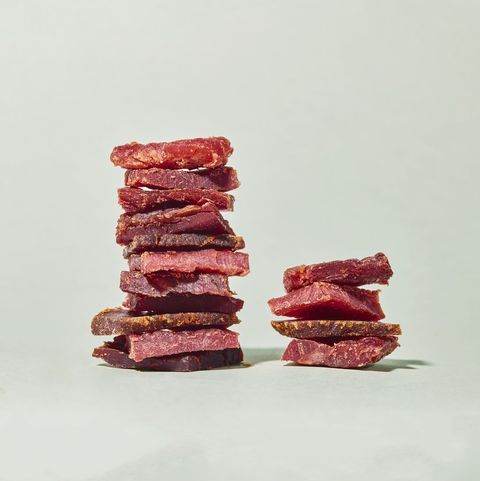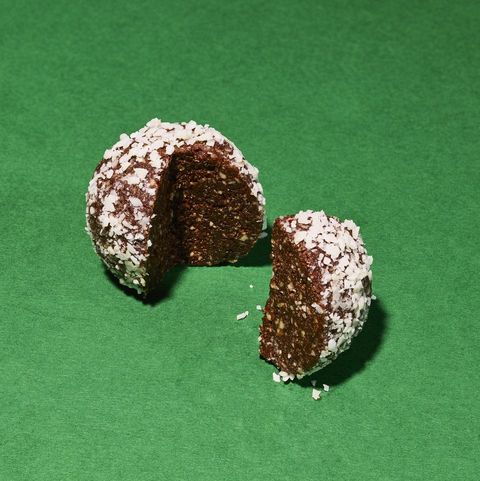How Our “Healthy” Snack Habits Could Be Hurting Us
Snickers, the world’s best-selling chocolate bar, was invented by Franklin Mars’s Mar-O-Bar Company in 1930. A couple of years later, the Mars bar emerged from a factory in Slough; Maltesers followed in 1936; then came KitKat and Smarties in 1937. The sweet-toothed author Roald Dahl called this period the “seven glorious years”. “Don’t bother with the kings and queens of England,” he advised his readers. “All of you should learn these dates instead.”
If you prefer savoury snacks – according to government statistics, our consumption of these has risen from an average of 29g per week in 1977 to 89g in 2015 – you might want to commit the seven glorious years of crisps to memory, too. Quavers arrived in 1968, Wotsits in 1970, Hula Hoops in 1973, Skips in 1974 and Frazzles in 1975. And you’ll find such clusters of innovation throughout the history of snacking. Sometimes, there’s an arms race dynamic between rivals – Kellogg’s and Quaker had come up with their basic breakfast cereals by the second decade of the 20th century. At other times, it more closely resembles a music scene: Golden Wonder, KP, Smith’s and Walkers were like rival glam rockers, bashing out prawn cocktail-flavoured 1970s hits, before Golden Wonder went punk with the Pot Noodle in 1977.
But never mind the Spangles: the golden age of snack innovation is arguably right now. Protein balls and breakfast bars; beetroot crisps and quinoa puffs; juice shots and almond butter squeeze packs – before the 21st century, none of these was so abundantly available, if they were available at all. The macro-trend is “healthy” snacking. Bounce, Kind and Natural Balance (which makes Nakd and Trek) kicked things off in 2004, part of a Millennial wave of “natural” snacks that is still gaining momentum. Even within existing categories, there’s evidently room for innovation. Popchips were dreamed up in 2007 after LA entrepreneur Keith Belling had an epiphany in a rice cake facility. “It made me realise you could pop a potato,” he told the Financial Times. He advised would-be snack entrepreneurs to offer lots of free samples and not to compromise on taste. “If it doesn’t taste good, it isn’t a snack and it’s just not going to sell,” he said.
Hunger Games
There’s a reason why we can put a date on the Pickled Onion Monster Munch or the Bounce Almond Protein Energy Ball, but it’s infinitely harder to trace the invention of the Lancashire hotpot. The former were created by companies. And given that pretty much every snack food of note was conceived in the past century, you might wonder what we snacked on before. Look into it and you’ll run up against a startling answer: we didn’t, really. It seems that the greatest invention of all was snacking itself. But there’s plenty of evidence that it wasn’t one of our brightest ideas.
“In the 19th century, there was no such thing as snacking,” says Professor Barry M Popkin of the Gillings School of Global Public Health in North Carolina. “[In the US], there were street foods and fairground foods – like hot dogs and popcorn – but none of the things we think of as snack foods existed.” Popkin, who is 75, coined the term “nutrition transition” to describe what happens when countries shift from diets composed of whole foods to heavily processed fare. One consequence is that they get fat. Across the planet, obesity has nearly tripled since 1975, according to the World Health Organisation.
OK, so you know that Haribo isn’t great for you. But I’m guessing that you’re not aware of how much of this is down to its status as a snack. “It’s really since the 1970s that snacking started to rise, first in high-income countries like the UK and US, and now globally,” says Popkin. “It’s the increase in eating events that explains the big increase in calories we’ve seen.” To put it another way, there are only so many calories that can be squeezed into breakfast, lunch or dinner. If you want to sell more food, you have to create more opportunities to eat.
According to a review of food habits led by Popkin, children consumed about 244kcal as snacks in the late 1970s. However, by the mid-2000s, this figure had more than doubled to 496kcal, even though the amount eaten at meals remained unchanged. It was once commonly accepted that eating between meals wasn’t good. But in a 2010 study, Popkin demonstrated that it’s now becoming harder to define what a meal even is. “What we found is that 40% of people were eating so frequently that they were never unsated,” he says. “They had over-ridden all of their satiety mechanisms. They were just getting fat.” While these studies were conducted in the US, Popkin says, “It’s happening in a lot of countries – including yours.”
Reality Bites
Snacking is one of those things that you don’t notice until you do notice it – and then you can’t stop noticing it. You notice your post-workout protein bars and mid-evening cheese wanderings and pre-bed granola. You notice other people’s mid-morning muffins and Central Line sushi boxes and Pret pot snaffling.
In my case, I started noticing it via my young son. I would often be the only parent who hadn’t arrived at the park with a bag of Organix Melty Carrot Puffs or Bear Pure Fruit Strawberry Yo-Yos (and I’d feel guilty when my kid managed to purloin one from someone else). He is now five, and snacks are part of his childhood in a way they weren’t when I was his age. At school pick-up time, many parents arrive armed with bananas and smoothies. Home-made cakes and apple slices are distributed mid-football practice, as if a child running around for an hour were inconceivable without some form of stimulant. Many parents, myself included, use snacks as rewards and distractions, more for reasons of behaviour control than nutrition. “He’ll be a monster, otherwise,” we tell ourselves, or: “She needs a pick-me-up after school.”
It’s not an easy subject to broach. People are defensive about their eating habits and, like Roald Dahl, we tend to associate snacks with happy childhood memories. Last October, when England’s then chief medical officer, Dame Sally Davies, suggested banning eating on urban public transport (with exceptions made for breastfeeding mothers and people with medical conditions), the outcry was loud and angry. Many assumed that this was a sadistic government initiative designed to punish people. They cited the hectic nature of modern life and the realities of shift work: after all, for some, a granola bar on the bus could be the day’s only refuelling opportunity.
This content is imported from embed-name. You may be able to find the same content in another format, or you may be able to find more information, at their web site.
In her book The Way We Eat Now, the food writer Bee Wilson outlines how changes in working patterns have promoted snacking. It’s commonly observed as an “irony” that nurses are often overweight. But it wasn’t so long ago that nurses worked eight-hour shifts and enjoyed scheduled meals in staff canteens that served meals such as baked potatoes and chicken casserole. Now, 12-hour shifts are normal, there are few mandated breaks, and the only food on offer comes from vending machines. It’s particularly hard to find nutritious food during night shifts. “The poor diet of nurses now is generally not caused by their failure to do their jobs but because they work all too diligently, following routines and schedules that make eating decent meals all but impossible,” she writes.
Such pressures are clearly contributing to “snackification”, as people in the food industry call it. And it’s a narrative that they are keen to push. If they fill those vending machines with protein balls and nuts, their profits may even rise: according to a Mintel report, 18% of consumers would pay more for a snack that they perceived to offer nutritional benefits.
One of the signature 21st-century snacks is the Graze box, launched in 2008. The innovation lies less in the foods contained in the box (cocoa vanilla protein flapjack? Sweet and spicy beetroot crunch? Belgian speculoos and cinnamon pretzel sticks?) and more in the delivery mechanism. The boxes arrive at your home or office via a subscription service, and are designed to be nibbled throughout the day. The company was launched by Graham Bosher, who founded LoveFilm, which did something similar with DVDs. Graze was acquired by a US private equity firm in 2012 and sold last year to Unilever at a reported valuation of £150m. Evidently, small bites are big business.
Food for Thought
Boredom is another key factor. A recent report into British snacking by the consumer insights company Kantar noted, “The snack food industry – well aware that they must tap into emotional as well as physical needs – is now competing with our smartphones for attention in those moments of boredom, pain, fatigue or self-indulgence.” In his book Capitalist Realism, the late political theorist Mark Fisher made a similar observation. He noticed that students were “snacking incessantly” in classes – a bit like how they listened to music on their headphones and checked their phones the whole time. When he asked them to read the books they were supposed to read, they simply couldn’t. They found it too boring. “To be bored simply means to be removed from the communicative sensation-stimulus matrix of texting, YouTube and fast food; to be denied, for a moment, the constant flow of sugary gratification on demand.” I’m bored: time for a snack.
Still, it’s worth teasing apart the different meanings of “snack”. For some, it conjures up manufactured junk foods. For others, it means anything eaten between mealtimes. There is plenty of evidence that many snack foods are lacking in nutritional merit (quinoa crisps included). As for whether eating between meals is bad in and of itself – that’s harder to say. The relationship between meal frequency, weight dynamics, insulin resistance and lipid profile is complicated; research is costly and time-consuming; and, in any case, most nutritional research is funded by big food companies. And snacking is hard to study: an apple could be eaten as a snack, or as a dessert; a bag of crisps could be eaten with lunch, or as lunch.
Those who work in nutrition rarely have much good to say about eating between meals. Dr Maximilian Schubert, medical director of the Vivamayr sanatorium in Altaussee, Austria, is more resolutely anti-snack than most. “Your digestive system needs a gap of four to five hours between meals,” he says. “The problem with eating too frequently is that pre-digested food and fresh food get mixed in the stomach. It will be passed on to the gut not perfectly prepared and cause bad digestion.” Nor is he in favour of, say, replacing your 4pm Twix with an apple. “I cannot give health advice on an unhealthy habit. I suggest you drink water or tea instead of snacking. Often, people misinterpret being thirsty between meals as being hungry.”
Then again, attitudes to snacking vary across cultures. Scandinavians have a tradition of fika, sociable coffee and cake breaks, a hangover from the days when farmers toiled 16-hour days and needed five or six meals to sustain them. Indians are virtuoso snackers: samosas, idli chaat, bhajis and rotis form part of a lively street food culture, often grabbed roadside by time-pushed urban workers. The French, by contrast, tend to credit a lack of eating between meals for their (reputedly) slender physiques. But they do find room for goûter, that time in the middle of the afternoon when schoolchildren sit down for a hunk of chocolate in a baguette. Spanish cultures have a similar mid-afternoon meal known as the merienda.
Still, what Popkin has found is that national distinctions erode once big food companies enter the marketplace. “We’ve been studying China since 1989,” he says. “At first, people didn’t snack. Then they started snacking on fruit. But now it’s no different from the UK or the US. It’s all kind of melded globally.” Indian street vendors and French supermarkets alike sell Lay’s crisps. In the future, all there’ll be to differentiate us will be the flavours.
Force of Habit
There is another major trend in snacking. The crisp companies, the chocolate bar conglomerates and the health food start-ups are merging. Take Quavers, launched by Smith’s in 1968. Many of the Smith’s brands were folded into Walkers in the 1990s; Walkers is owned by PepsiCo; PepsiCo also owns Tropicana, Quaker Oats, KeVita kombucha and Naked Juice. Innocent Smoothies is 90% owned by Coca-Cola. Kind is now part-owned by Mars. Popchips is distributed in the UK by KP Snacks, which is owned by the German conglomerate Intersnack; prior to that, it was part of United Biscuits, owned by the Turkish conglomerate Yildiz Holding.
Popkin says that big companies were instrumental in “creating” snacking. “Ask any food company president, or read their literature: snacking is their biggest growth market. Health foods are a huge profit driver and the companies that have pushed it the most have grown the most. Nestlé, PepsiCo, Mondelēz, Kellogg’s – they’re all going into this.”
He believes that regulation is the only way to combat the combined advertising and lobbying power of Big Food. He cites Britain’s sugar tax as an example, but Chile – until recently the world’s leading consumer per capita of high-sugar sodas – has taken things further. In 2016, its food labelling law restricted junk food advertising for children, eliminated unhealthy food from schools and introduced prominent cigarette-style warning labels on foods high in sugar, salt and fat (including many so-called health foods). Consumption of sugary drinks fell by about a quarter in the first year; every other category of junk food fell by 10-15%.
Judging by the snacklash that greeted the proposed ban on eating on public transport, it’s unlikely that the UK will be resorting to such measures any time soon. In any case, it isn’t just the food companies that are driving our grazing habit. If you’re running a cinema, you have to make money by selling popcorn. If you own a bookshop, you stay afloat by selling cake and coffee. Snacks are among the few things you can’t download.
But try cutting them out of your diet: see how long you can keep it up. You can still have a flapjack for dessert, or some crisps as a pre-dinner appetiser. Restrict your eating events to mealtimes, just to see how it feels. You might find you need those extras less than you think.
It’s worth noting that not all nutritionists are against snacks, per se. “Some of us do well on them,” stresses Dr Ian Marber, a nutrition therapist based in London. “There are people who process protein, carbohydrates and fat much quicker than others.” But when I mention “healthy snacks”, he brings me up short. “Look on Instagram. So many influencers will post, ‘This makes a yummy snack.’ It might contain whole ingredients, but the portion will be huge. Even small companies that think they’re doing us a service by selling healthy snacks are perpetuating this idea that snacks are essential. Often, it’s just a habit.”
For most of us, it’s a habit we don’t even notice. Perhaps noticing it is the first small step to turning it around.
This feature was originally published in the April 2020 issue of Men’s Health UK.
This content is created and maintained by a third party, and imported onto this page to help users provide their email addresses. You may be able to find more information about this and similar content at piano.io




